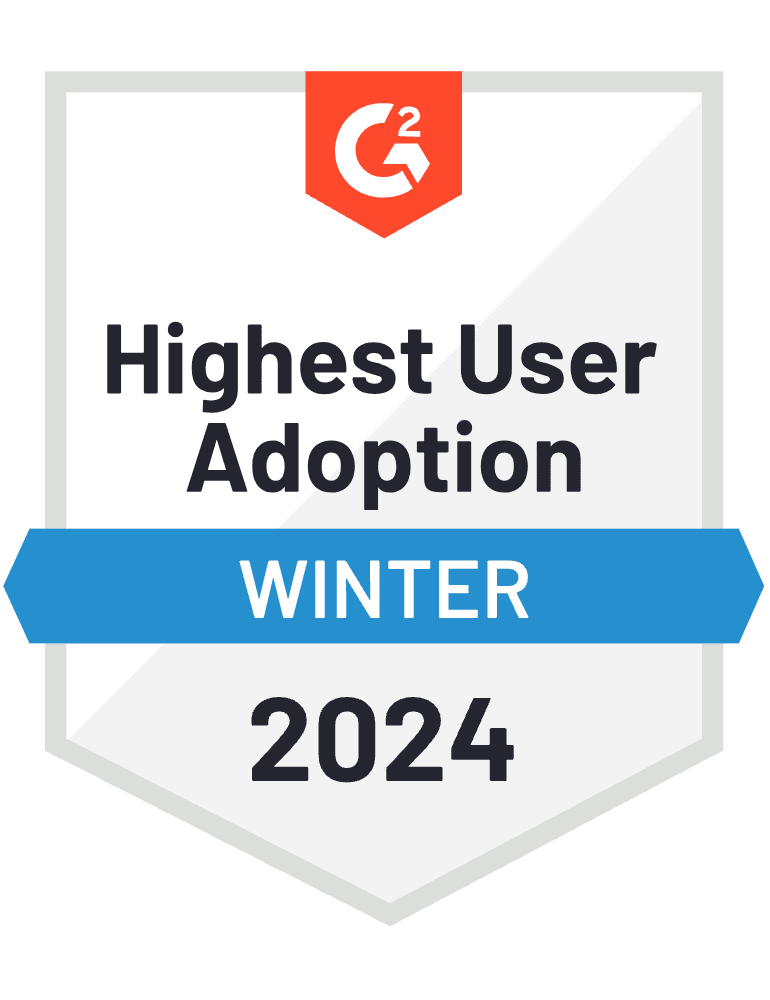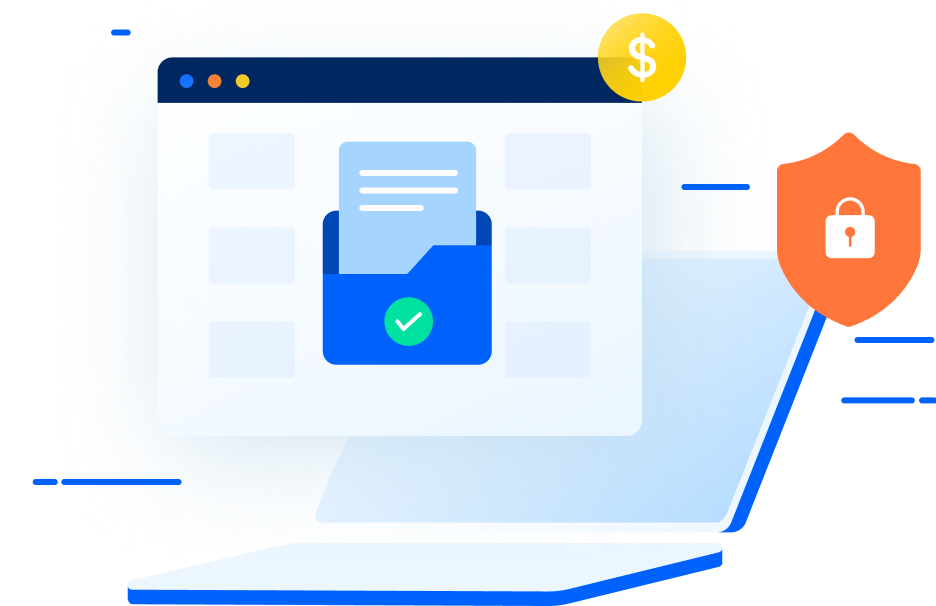Compliance made easy
SOC 2 for Healthcare: Unlocking Compliance Confidence
While IT and SaaS businesses lead SOC 2 adoption, the healthcare and health tech industry is gradually embracing it. Early adopters stand out as leaders in patient privacy, data security, and records management, turning SOC 2 into a real competitive edge. Read on to see how it can benefit your business




What is SOC 2 for healthcare?
SOC 2 for healthcare is a cybersecurity framework that helps organizations and vendors protect sensitive patient information against breaches and unauthorized access.
SOC 2 (Service Organization Control 2) is a cybersecurity framework that ensures service organizations protect sensitive client information. It was developed by the American Institute of Certified Public Accountants (AICPA) and is based on its five trust principles: security, availability, processing integrity, confidentiality, and privacy.
While healthcare businesses still need to comply with HIPAA to safeguard protected health information (PHI), SOC 2 adds an additional layer of security and privacy for the data processed.

Why is SOC 2 important for healthcare?
SOC 2 for healthcare is important because it provides independent verification of security controls, demonstrating operational excellence and a commitment to proactive risk management. It helps build trust with partners and clients, helping healthcare organizations stand out in a competitive market.
50% demand surge
Growing recognition across industries
Independent verification
Third-party audits
Broader assurance
Trusted for security maturity
Competitive advantage
15% Healthcare Adoption so far
But why would a healthcare company pursue SOC 2 if they already comply with HIPAA?
What HIPAA brings
to the table?

PHI specific protection

Third-party assessments without a standardized format

Limited recognition as a formal credential

Assurance for healthcare-specific operations

What does SOC 2 for
healthcare add?

Broader data protection and cybersecurity assurance

A detailed, standardized SOC 2 report demonstrating security and resilience

Globally recognized SOC 2 reports serve as a marketable credential

Expansion into adjacent sectors like pharma and Insurtech
Which Trust Services Criteria are most relevant for healthcare businesses?
Security, confidentiality and privacy are the most important criteria for healthcare businesses. Availability is for patient-facing platforms and Processing integrity is crucial when reliability impacts patient care.
Security (Yes)
Controls include access controls, encryption, regular security testing etc.
Confidentiality (Yes)
Covers data classification policy, media disposal policy, endpoint protection etc.
Privacy (Yes)
Requires retention policies, patient consent mechanisms, third-party assessments etc.
Availability (Depends)
Controls include data backups, disaster recovery, business continuity etc.
Processing Integrity (Depends)
Requires validation of data inputs, change management, cryptographic protection etc.
But what about the timeline and costs?
If you’re going all in on the traditional route, this is what SOC 2 timeline and costs will look like:
Typical SOC 2 timeline
Risk assessment: 1-2 weeks
Policy setup: 2-4 weeks
Employee training: 4-8 weeks
Control testing + evidence collection: 1-2 months for SOC 2 Type 1 and 3-6 months for SOC 2 Type 2
Auditor engagement: 2-4 weeks
Support and maintenance: Ongoing
Typical SOC 2 costs
Pre-audit costs
Pre-audit costs including employee training, evidence collection, security consultation and risk assessments:
$30000-$50000+
Audit costs
For small and mid-sized businesses, type 1 can cost $8000-$12000 and type 2 can cost $15000-$40000 when you choose boutique and mid-tier audit firms.
ISO 27001, HIPAA, GDPR
However, with Sprinto the timeline and costs can be slashed to half or even less. Read how Kodif spent less than an hour a week to get on top of compliance tasks and achieved both SOC 2 and HIPAA with only 20% marginal effort.
Steps to implement SOC 2 for healthcare
There are two ways to approach this since SOC 2 and HIPAA share many commonalties:
(I) If you are not HIPAA compliant
1
Define SOC 2 scope
When you present your SOC 2 report to clients, it is crucial that you showcase relevant systems rather than the complete production environment. So, for the scoping exercise, identify all gateways through which sensitive data flows—the people, physical infrastructure, networks, and more.
2
Conduct risk assessments and gap analysis
Identify key infosec risks using risk assessments and score them based on their likelihood and impact. For gap analysis, evaluate your current controls, policies, and procedures — not just from the perspective of meeting audit deadlines, but also to ensure they effectively address these risks. The key is to take a time-agnostic approach to enhancing security maturity.
3
Establish policies and remediate weaknesses
Compliance begins with policies aligned to the requirements. Draft security and privacy policies and SOPs related to acceptable usage, information security, incident response, change management and vendor management. You can access the complete list here.
Next, based on the control gaps, start implementing access controls, encryption, MFA, third-party risk management, and other key requirements.
4
Train employees
It is important that employees understand both HIPAA and SOC 2 requirements and undergo security awareness training. The key focus areas will include data security, privacy violations, roles and responsibilities for control implementation and incident response.
5
Prepare for the audit
Gather evidence such as policy documents, system configuration, access logs, training records and network diagrams to demonstrate compliance. Engage with a licensed CPA firm that has experience with SOC 2 for healthcare and work with the auditor to get a SOC 2 report.
6
Maintain ongoing compliance
Continuously monitor controls and regularly review and update policies to maintain ongoing compliance. Since the SOC 2 report is valid for 12 months, you’ll need to make ongoing maintenance efforts to achieve a state of continuous compliance. Some auditors may also ask for evidence of ongoing compliance in your next audit.
(II) If you are HIPAA compliant
If you are already HIPAA compliant, you’ll have to perform a mapping exercise since the frameworks share about 80% overlaps. This will be followed by strengthening or implementing the missing controls, such as third-party risk management or SOC2 compliant reporting mechanisms, and proceeding with the usual audit steps.
Benefits of SOC 2 for healthcare
Enhanced data protection
SOC 2 provides essential security practices for data loss prevention, incident response, intrusion detection, access control, and continuous monitoring, serving as a globally accepted benchmark for securing patient data
Accelerated vendor assessment
A SOC 2 report provides audited assurance of your security program, reducing time on security questionnaires and accelerating vendor assessments by building trust in your security measures.
Legal and financial protection
Healthcare data breaches can result in fines, lawsuits, and downtime, straining businesses financially. SOC 2 supports regulatory alignment, complementing HIPAA to reduce risks and ensure continuity.
Shortened sales cycle
SOC 2 is now a baseline requirement, instantly building trust, shortening sales cycles, and helping secure enterprise deals by proving your security safeguards.
Scalability for growth
SOC 2 supports scalability by establishing resilient security practices and providing a solid foundation for achieving certifications like ISO 27001, GDPR, and HIPAA.
How Sprinto can make things easier for my business?
As a healthcare business, you are probably sitting on a mountain of sensitive patient data. Any big company would need assurance to partner with you and that is why SOC 2 is a powerful tool to get their heads nodding. However, being a compliance tool, Sprinto knows firsthand how difficult things can get when you are trying to achieve security and compliance without slowing down your business. And that’s why we wish to help.
Not only can Sprinto bring all your compliance requirements under one roof, it can also fast-track the process from months to weeks. Here’s how we do this:

Watch Sprinto in action and kickstart your journey today.
Frequently Asked Questions

Sprinto: Your growth superpower
Use Sprinto to centralize security compliance management – so nothing
gets in the way of your moving up and winning big.


